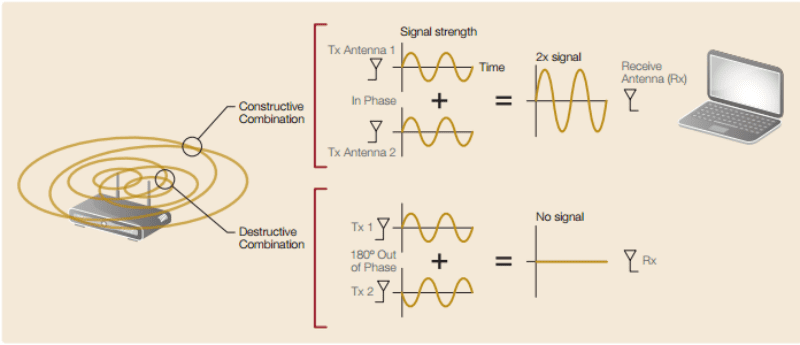Beamforming: Why the Basics Aren’t so Basic


Beamforming is the main thing that separates the 802.11ac wireless standard from other legacy wireless standards. While this technology allows for gained speeds and stability, it does have limits and will not be the end all be all solution to your standing wireless connectivity problems. However, when used in combination with adaptive antennas and other essential tools, beamforming can be the key factor in your business achieving maximum speeds.
There are some principles that need to be understood first about beamforming and they are laid out in this free whitepaper from Ruckus Wireless. Multi antenna technology can be very complicated, even to the most seasoned professionals. The fact that most technology professionals don’t have a lot of experience in advanced radio-frequency engineering adds to this complexity. Since this technology is so off base with what is normal for buyers, IT departments and even vendors, it’s easy to be misled. Marketing people are not really qualified to talk to buyers and when buyers are just as unfamiliar with the product as the person trying to sell it to them things can get a little dicey.
To get out of the head space of knowing so little about the RF technology, beyond just seeing that it’s working without understanding why, it’s important to dig in and do a little research on beamforming to get the ‘why’ and ‘how’. While most of these points are made through a Ruckus whitepaper, they remain true across the board for all 802.11ac vendors.
When a traditional antenna access point is transmitting, it sends the same signal all around itself like a circle. This signal is also a horizontal plane, and while this works for design purposes it isn’t the most efficient way to use the radio energy by a long shot. Most of the energy is wasted because it can only communicate with one client at a time. It also interferes with other APs in the area only a small amount of the transmit energy reaches where it’s supposed to go.
So what happens when you add another antenna? When two of the same antennas are transmitting the same signal, they create intersecting rings of signal that have different peak areas. Some of these peak areas line up and combined make a stronger signal. This isn’t all smooth sailing though; there are zones like this called constructive combination and there is a phenomenon called destructive combination that yields no signal at all. The answer on how to get better signal is much more than just sticking more antennas on your router.
What beamforming does, is it controls the direction of the transmission and reception of radio signals. Because a 4×4 MIMO system supports two data streams and provides two extra transmit antennas, the energy can be focused in two directions, while reducing the interference of other APs, networks or destructive combination zones.
For a more information on beamforming, check out the whitepaper from Ruckus Wireless.




















